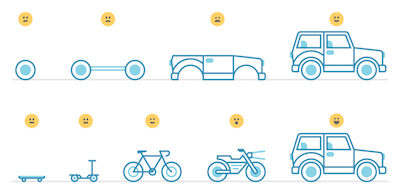Intro
Agile Layout is changing the way groups create, test, and release products. Integrating dexterous method with layout thinking, Agile Design supplies an adaptable and iterative method that allows groups to react rapidly to market changes, incorporate user responses, and continuously boost product high quality. As organizations increasingly go for a much faster time-to-market and a far better customer experience, Agile Design has actually emerged as a useful method.
What is Agile Layout?
At its core, Agile Layout is the mix of active advancement concepts with user-centered design approaches. Agile Layout inevitably leads to a product that fulfills customers' needs a lot more successfully.
Secret Principles of Agile Layout
User-Centric Strategy: Agile Style puts users at the. By continually screening and refining based upon responses, developers ensure the item aligns with real-world user assumptions and demands.
Partnership: Agile Layout emphasizes team effort, damaging down silos and encouraging close cooperation between designers, developers, and stakeholders. This improves interaction and ensures that each group member's insights educate style choices.
Iterative Growth: Agile Style counts on iterative cycles-- short, concentrated sprints of job that bring about quick models and rapid testing. This allows teams to identify and
repair issues early,
boosting both rate and high quality.
Flexibility: Agile Design adapts to altering demands throughout the task. Groups prioritize flexibility, adjusting as user requirements evolve or market problems shift.
Advantages of Agile Layout
Agile design strategies Style uses numerous crucial benefits. It increases time-to-market by developing area for quick adjustments, minimizes thrown away sources, and reduces the threat of providing a product that falls short of customer expectations. Additionally, Agile Style promotes a society of flexibility, making it simpler for teams to pivot as new insights emerge.
Applying Agile Layout
To implement Agile Style, begin by damaging down the layout procedure into sprints, establishing clear goals for each and every phase. Foster a culture of cross-functional partnership by motivating communication in between all entailed groups. Routinely test designs with real customers to make certain that the product remains straightened with advancing requirements.
Integrating nimble technique with design reasoning, Agile Layout supplies a flexible and repetitive strategy that enables groups to respond rapidly to market shifts, integrate individual comments, and continuously enhance item high quality. At its core, Agile Layout is the mix of agile development principles with user-centered design methods. Agile Design eventually leads to a product that meets customers' requirements a lot more successfully.
To apply Agile Style, start by damaging down the style procedure into sprints, establishing clear purposes for each stage.
